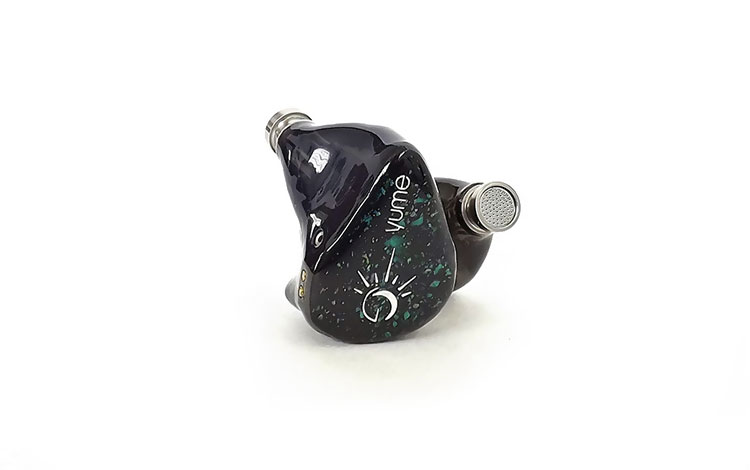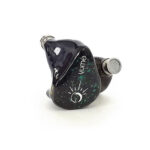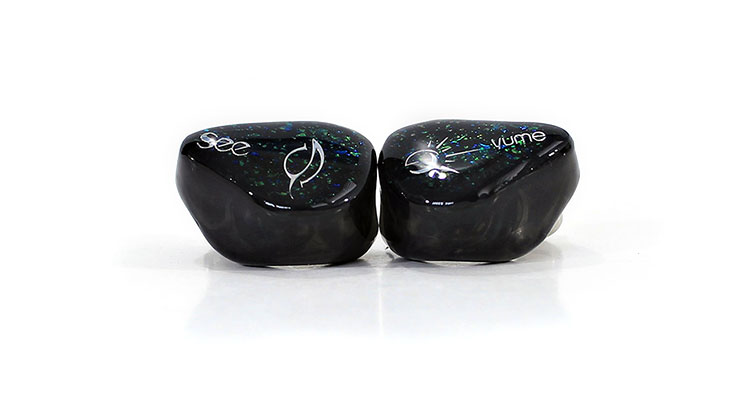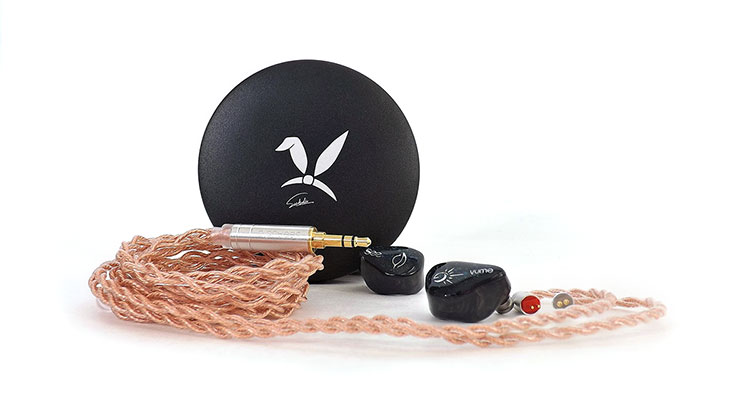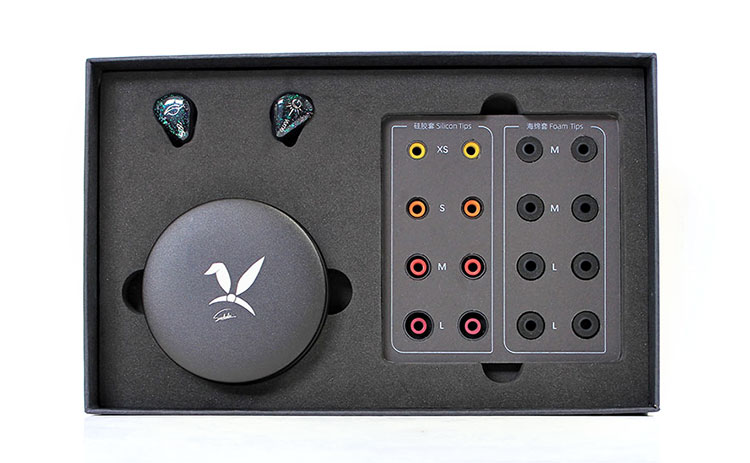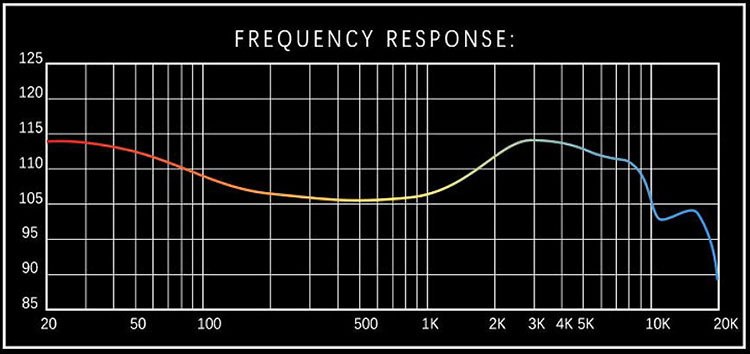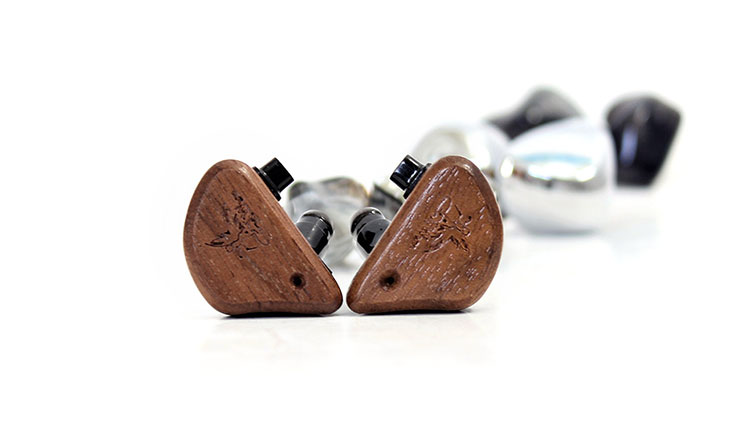The SeeAudio Yume is a hybrid universal IEM featuring a liquid silicone diaphragm dynamic driver and 2 custom BA. It is priced at $169.
Disclaimer: The SeeAudio Yume sent to us is a sample in exchange for our honest opinion in this review. We thank the team at Linsoul for giving us this opportunity.
To read more about Linsoul reviews previously done on Headfonics please click here.
Note, this review follows our new scoring guidelines for 2020 which you can read up on here.
SeeAudio started back in 2018, branching out of Hangzhou Xinyi Technologies. It is composed of several people with a high skill set and many years of experience making IEMs.
This is a small IEM manufacturer that sells their IEMs mostly through dealers such as Linsoul and at present offer 3 models that are all multiple driver designs so it seems like they are branching out into the global market fairly quickly.
Well, they recently sent us what seems to be their entry-level model IEM called the Yume. This is a three-driver hybrid IEM. Yume is the Japanese word that means dream and there is also a song called Yume. Let us see if these can sing!
Tech Highlights
Hybrid Driver Design
SeeAudio broke the norm here because all their other readily available IEMs use BA drivers to produce bass and the Yume uses a dynamic driver for the bass region.
Also breaking the mold far as the traditional dynamic driver materials the SeeAudio Yume uses a 9.2mm premium liquid silicone diaphragm dynamic driver which is made with liquid silica that is impervious to temperature fluctuations therefore always maintaining its shape regardless of ambient temperature.
The rest of the driver array inside the IEM shells includes a pair of custom Balanced Armature drivers tuned for smoothness and a non-fatiguing sound signature.
Each driver handles a portion of the frequency spectrum as in a three-way speaker system, the dynamic driver handles the bass while the two balanced armatures handle the midrange and the treble respectively completing the spectrum.
LFC Technology
One of the methods SeeAudio used to tune the Yume is called Low-Frequency Filter Conversion or LFC which according to them removes crossover distortion and eliminates internal refractions.
SeeAudio followed the latest 2020 Harman target frequency response curve to tune the Yume but optimized them for a DD vibration ultra low-frequency sound domain response according to their literature on the website.
The LFC tech allowed them to calculate an optimal cavity size between the dynamic driver and the sound guide capillary which came out to 33.91 cubic millimeters. This, according to SeeAudio, gave the dynamic driver a more correct phase response in its dominant frequency band.
SeeAudio provides a graph of the Harman curve compared to theirs and it seems a smoothing of frequencies occurred with LFC implemented especially in the midrange area all the way to the highs and up to around 10kHz.
Design
Shell Assembly
I am certain that SeeAudio uses medical-grade resin to create the Yume IEM shells although it is not specified. I get easily irritated with lesser quality resins and the Yume never irritated my ears in all the many hours I wore them so far.
The Yume shell design is the common empty resin shell with all the drivers installed through the rear and then each side is capped off with 2 covers displaying similar artwork but with different logos.
The shells have a smoked dark grey appearance that when looked through at the right angle you could almost see-through and spot the drivers. It seems that SeeAudio pushed the drivers back into the rear of the shell and individually output each BA driver by the use of tubes that direct sound to the output nozzle.
Next to each of the 0.78mm, dual-pin flush-mounted connectors are metal vents that look to be particularly for letting the dynamic driver breathe. The aluminum output nozzle finishes off the package.
Artwork
Each SeeAudio shell back piece is finished with subtle metallic flaking embedded in green and purple with green as the most dominant color.
Each shell has a different emblem or symbol in a silver inlay. The shell with the SEE logo has a symbol that resembles the eye of Horus but the one with the Yume logo has a moon symbol I do not recognize and could make a good discussion.
I find the patterns here to be subtle and not too attracting, not to be confused with not attractive because that they are. I do like the subtle design. Only when intense light hits those IEMs at a particular angle is that you see them sparkle but it’s still a subtle effect.
Stock Cable
The SeeAudio Yume uses the common 0.78mm connector which in the Yume is a flush-mounted type which makes compatibility high if you want to outsource a different cable assembly to go balanced for example.
On the other end, the 3.5mm TRS single end plug is made of aluminum and is SeeAudio branded with a very short rubber strain relief. The plug itself is gold plated.
The wire is an OFC copper 4 wire braid that terminates at 34 inches to a metal split that matches all the hardware including the length adjuster which resembles the short rubber transparent strain relief.
The assembly splits into two twisted pairs of copper wires up to the matching .78mm male connectors which have red and blue tips for easy channel identification.
This is a high-quality 5N OFC wire and although there is no other connectivity offered except for the 3.5mm SE plug I consider it to be fine for two reasons. The first reason is that these do not need balanced power and at this price bracket other IEMs take the same approach.
Comfort & Isolation
The SeeAudio Yume is a very lightweight IEM made with medical-grade anti-allergenic resin and I personally can wear them for hours with no discomfort or irritation at all.
The part that touches the inner ear is well-formed and there are no sharp ridges or edges that rub against the ear. Isolation is very good. Once you find the right tips the Yume seems to isolate external noise more than the SeeAudio rating of 26 decibels.
Packaging & Accessories
Since we got the wire out of the way let’s talk about the included accessories. To start, the packaging is quite cool and more than adequate to give the buyer a nice boxing experience. Anime character identification is not my bag so someone else might be better qualified to identify the anime character on the box. Yume?
One note is that the hockey puck carrying case has a design that made me blush. Someone with the initials of HH might come to mind. Hopefully, the patent on the bunny ears has expired. But on a side note, the hockey puck is made of metal with a pull-off top and it’s really nice.
Tip inclusion is adequate and SeeAudio includes 9 pairs. Four foam tips and four silicon tips plus one set of rubber medium-sized tips came inside the hockey puck which is the tip I mostly used. You get the literature of course and also some Rinko stickers.
Sound Impressions
Summary
SeeAudio not only went with a tuning close to the Harman curve on the Yume but mostly with a soft-mannered laid back, smooth, and non-fatiguing presentation. The Yume seems neutral across the frequency spectrum except for a slight peak around the 4 k to a bit past the 6 kHz region.
The Yume is a smooth listen and nothing seems piercing or harsh. You could listen to saxophone music all day hardcore on these and not feel fatigued. There is a very slight V shape tone with a slight concentration in bass response.
I do admire the tuning which I can tell is attenuated, disciplined, and controlled especially at the high frequencies starting at around 8K which is probably the crossover point.
The attenuation is to me perfectly done because it calms the treble to the point of being audible and clear while remaining crisp and at the same time staying way below the pain threshold some BA tweeters can touch if pushed too hard.
Frequency Spectrum
The bass digs deep and in the tone sweep test, the SeeAudio Yume is clearly flat in bass response all the way down to 18Hz which at that point bass response starts to gradually dip.
The bass does dig deep and there is good speed and tonality but it has a character closer to a good BA bass array than a dynamic. Bass slam seems timid unless you boost up some of the bass frequencies which do pick up energy and punch with little or no degradation to other frequencies.
The midrange is fairly smooth and does not have a close-up character but rather seems to sound pushed back and with the addition of some width. There is some forwardness but only at the top of the midrange area which is in the area mentioned of 4 to 6K. The general tonality is fairly realistic and only gets piercing at the mentioned frequencies and at very high volume levels.
The treble response seems fairly crisp with a small edge and somehow manages to sound well although the tone generator sweep test denoted some anomalies. First is a sharp output drop-off at 12kHz and then a reemergence at 17kHz.
From 6K to 12K sound shifts slightly to the right channel meaning there is a slight frequency imbalance. This could vary from set to set and could just be my pair.
Staging
Off the bat, the SeeAudio Yume sounded wide and spacious which I bet is attributed to the designers pushing the drivers back into the shell cavity far from the ear as possible.
These have a very good frontal sound stage, good width plus some depth. Height is good also but mostly on the left and right sides of the soundstage. Cymbals seem to be able to position themselves anywhere they want long as they stay within that left or right boundary.
Badu on Mr. Telephone man sounds like she is behind me during the intro then her voice takes on an extra width and at the end, the operator’s voice also seems to come from behind you. These do very well far as staging and punch beyond their price range in this area. Tyrone live shows off an appropriately large stage-like size image on the Yume.
Refused Old Friends track intro showed off some good imaging with each deep rhythmic breath projecting precise side-to-side sweeps with an additional in and out positioning within the stage while the vocals take center stage.
Musicality
To me, the SeeAudio does music well with Acoustic instruments because of their natural timbre. They do Jazz, Popular music, light Rock and live music best with music that is not too complex with dozens of elements as in Classical because some of the elements can get conglomerated.
Are these more analytical than musical? They sit in between. Honestly, they are not flat enough to be analytical but are not colored to a point of sounding very emotional but mostly try to sound balanced.
Their dynamic response is well-mannered and not too aggressively tuned in that aspect and it seems the Yume focuses mostly on neutrality and an even, realistic tonality.
Probably the best Yume attribute is the rather realistic tonality with the non-aggressive soft-mannered tuning which makes them ideal for long listening sessions because these characters present a low level of listening fatigue.
Synergy
The SeeAudio as stated earlier comes with a single-ended cable assembly with 3.5mm connectivity and honestly does not need lots of power to satisfy the most hardcore volume seekers. These will give ample volume and output with anything that has a 3.5mm jack.
Matter of fact, the SeeAudio Yume sounds just as loud on my Android Motorola phone as on my most powerful amplifiers like the Topping A90 or even on the iFi Diablo which will be reviewed soon.
Of course, you get a bit more top-end volume with more power but at that point, you will enter into very dangerous loud levels. Long as you feed the Yume clean power they will sound loud enough, musical, and enjoyable.
I was playing with different tips to see which gave me the best sound signature and honestly liked the stock tips that came inside the hockey puck and they seemed to be my size exactly.
But I took some foam tips and carefully cut them to a shorter size, a trick I use sometimes, and the shorties as I call them sounded just as good but perhaps with a little more forwardness in the midrange particularly.
Selective Comparisons
TRI I3
Technical
I lovingly call these my T3 IEMs. Why? Because the silver finish looks like they were specifically made for the liquid terminator to wear or at least made to match his liquid metal skin tone.
If you could hold these in your hands the word that will come to mind is robust. The all-metal highly polished body is almost indestructible however the price for the robustness is extra weight and between the two of course the Yume is the lighter of the two and perhaps more comfortable.
They both come with a good cable assemble which are similar in construction and materials used and both terminate to a single-ended 3.5mm plug. The difference is that the TRI I3 uses the MMCX connector type.
The Yume does not benefit much from extra power but the TRI I3 does because the main driver is a Planar Magnetic unit beside the dynamic driver with a Balanced Armature for the highs and they need some decent power to really wake up that planar driver.
The TRI I3 although at a similar cost does not come in a box with anime art but it does come with a carrying case plus a carrying bag and with only a few tips which I thought was the only lacking aspect.
Performance
I really do like the sound signature of the TRI I3 on those occasions that I want vocal clarity over everything else and when I want intensity and detail. The TRI I3 tends to bring elements forward and bombard the listener with midrange detail.
The bass is more aggressively tuned and has a more rounded and fatter bottom end. The treble section is very similar to the Yume. However with the Yume early drop and reemergence after 17kHz the TRI I3 seems more evenly distributed and flatter sounding up top.
The TRI I3 seems the more dynamic of the two with a higher amount of attack but with a quick decay while the Yume seems more calm and relaxed.
On the soundstage, I notice that the TRI I3 has better depth and can project elements further outward but width and perhaps height seem ampler on the Yume.
Little Dot Cu Wyn
Technical
The Little Dot CU WYN are a natural tuned warm sounding full bass sounding IEM made of wood which contrasts the others in construction within this comparison.
When I want to get into a Jamaican Reggae heavy bass music mode I pop these in and since they are very sensitive with just a single dynamic driver and a single BA I can push them with anything I have at hand.
One thing to note is that the CU WYN comes with a thinner wire that most people might find to be not as pleasing to the eye versus the better elaborated 4 braid cable with metal hardware that comes with the Yume.
Tip selection is ampler with the Yume also which includes foam tips but the CU WYN is almost insensitive to tip selection and is not finicky so just look for comfort and done. I did prefer rubber tips with both IEMs over other types.
Performance
The CU WYN has more energy down below and has the deeper bass response from all the IEMs in this comparison. The impact is heavier with a decent attack and delay but yet still sounds gentle and composed.
The midrange section seems a touch more subdued and relaxed and so do the high frequencies which seem to have an early dip when in fact the dip is gradual and although there is a good high-frequency extension the CU WYN seems to have the highs pushed outward in the soundstage.
Staging seems to be the narrowest except for some treble outer projection these present at times. The narrowness is mostly in the midrange. The triangle of sound seems to be a smaller space in general.
Audiosense DT200
Technical
The Audiosense DT200 has re-emerged around the internet lately within the last few months and people are rediscovering these little lightweight babies. These have got to be one of the lightest IEMs I have, beating out the CU WYN which is probably the second lightest.
The shells are constructed of medical-grade resin same as the Yume but use a smoky clear colored resin and a total contrast in color using a silver basket weave pattern with the AS logo and DT200 inlaid in gold.
The cable assembly I would say is in dead center in quality over the other three IEMs in this comparison. It only beats the CU WYN stock wire but not the other two which have 5N OCC wires with similar metal hardware.
Of the four IEMs, these are the only 100% BA-based IEMs. Each DT200 shell has two balanced armature drivers, one for bass and one for the midrange and treble, and present sonically the softest and most delicate in character from the bunch.
Performance
The DT200 reminds me so much of point source speakers. They do not have the best bass response or the best high-end extension. They have the lowest amount of impact and slam and are not the best choice for music that depends on bass response.
What are they like? If you know point source speakers then you know these in a sense because the DT200 need to be fed correctly because they do not like to be pushed very hard and like a medium volume level.
With point source speakers you have to use the right amp, place them optimally taking into consideration room dimensions and seating position. Once you get past that they start to paint an image of the music in front of the listener and that is what these do.
Staging is the DT200 forte over the other three in this comparison but suffers from a lack of impactfulness and almost sound as if the sound is coming from the ether. They do remain clean and tonality is accurate but the raw punch of the other IEMs is missing making these a soft listen but all the sonic detail is retained.
Our Verdict
There are a couple of patterns emerging from the IEM industry and those two are soft, low fatiguing, and easy on the ears tuning plus a high value per dollar sound signature. The SeeAudio Yume hits both these checkmarks.
The SeeAudio is a good example of a modern-day IEM that hits a high price to performance ratio that was unobtainable ratio just five years ago. Most buyers will like the Yume but are they the pinnacle of an IEM? No.
I would say at the price point the SeeAudio Yume is a very safe buy and you cannot do much better at that price.
Rounding up my thoughts on the SeeAudio Yume would be an IEM with good looks and a sound signature that will please almost any buyer, absent of harshness, and with a good tonality and frequency response. The Yume is a good value indeed considering today’s standards.
SeeAudio Yume Specifications
- SENSITIVITY 106db +/-1dw
- IMPEDANCE 32 ohms
- FREQUENCY RESPONSE 20 to 20 kHz
- FR QA/QC +/-1db
- THD Less Than 2%
- NOISE REDUCTION 26 DB
- DRIVERS 1DD and 2BA
- PLUG TYPE 3.5mm
- INTERFACE 2 Pin
- CABLE 5N OCC

